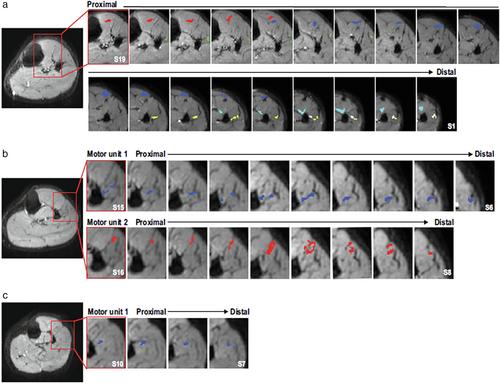Motor Unit Magnetic Resonance Imaging (MUMRI) In Skeletal Muscle
Abstract
Magnetic resonance imaging (MRI) is routinely used in the musculoskeletal system to measure skeletal muscle structure and pathology in health and disease. Recently, it has been shown that MRI also has promise for detecting the functional changes, which occur in muscles, commonly associated with a range of neuromuscular disorders. This review focuses on novel adaptations of MRI, which can detect the activity of the functional sub-units of skeletal muscle, the motor units, referred to as “motor unit MRI (MUMRI).” MUMRI utilizes pulsed gradient spin echo, pulsed gradient stimulated echo and phase contrast MRI sequences and has, so far, been used to investigate spontaneous motor unit activity (fasciculation) and used in combination with electrical nerve stimulation to study motor unit morphology and muscle twitch dynamics. Through detection of disease driven changes in motor unit activity, MUMRI shows promise as a tool to aid in both earlier diagnosis of neuromuscular disorders and to help in furthering our understanding of the underlying mechanisms, which proceed gross structural and anatomical changes within diseased muscle. Here, we summarize evidence for the use of MUMRI in neuromuscular disorders and discuss what future research is required to translate MUMRI toward clinical practice.
Level of Evidence
5
Technical Efficacy
Stage 3


 求助内容:
求助内容: 应助结果提醒方式:
应助结果提醒方式:


